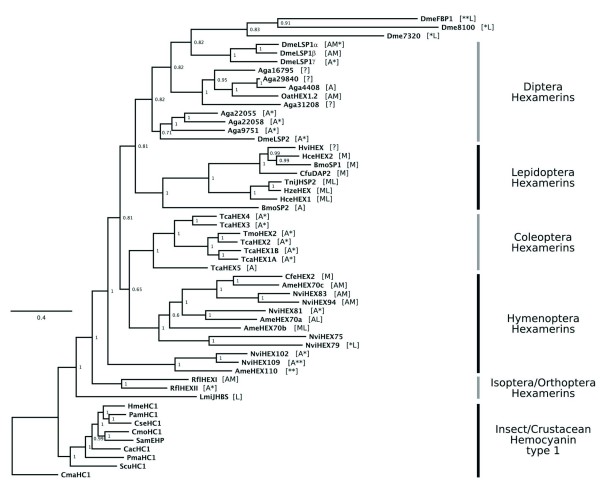Figure 4.
Evolutionary relationships among insect hexamerins and hemocyanins. The phylogenetic tree was inferred by bayesian method and the posterior probabilities are represented at each node. [See Additional data for the accession numbers of hexamerins and hemocyanins included in the tree (file 14), and for the alignment use in tree reconstruction (file 15)]. Symbols and letters in brackets indicate: ** very high-Glx content (>15%); * high-Glx content (between 10% and 15%); A: arylphorin; M: methionine-rich; L: leucine-rich; ? indicates that amino acid composition could not be determined. The first three letters of the protein's abbreviation represent the species: Cma:Cancer magister; Scu: Sinella curviseta; Pma:Perla marginata; Cac: Chelidurella acanthopygia; Sam: Schistocerca americana; Cmo: Carausius morosus; Cse: Cryptotermes secundus; Pam: Periplaneta americana; Hme: Hierodula membranacea; Rfl: Reticuliformis flavipes; Lmi: Locusta migratoria; Ame: Apis mellifera; Nvi: Nasonia vitripennis; Cfe: Camponotus festinatus; Tca: Tenebrio castaneum; Tmo: Tenebrio molitor; Bmo: Bombyx mori; Hce: Hyalophora cecropia; Hze: Helicoverpa zea; Tni: Trichoplusia ni; Cfu: Choristoneura fumiferana; Hce: Hyalophora cecropia; Hvi: Heliothis virescens; Dme: Drosophila melanogaster; Aga: Anopheles gambiae; Oat:Ochlerotatus atropalpus.

